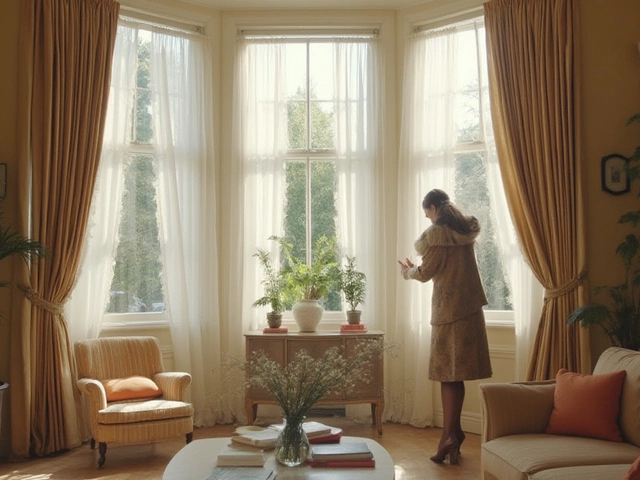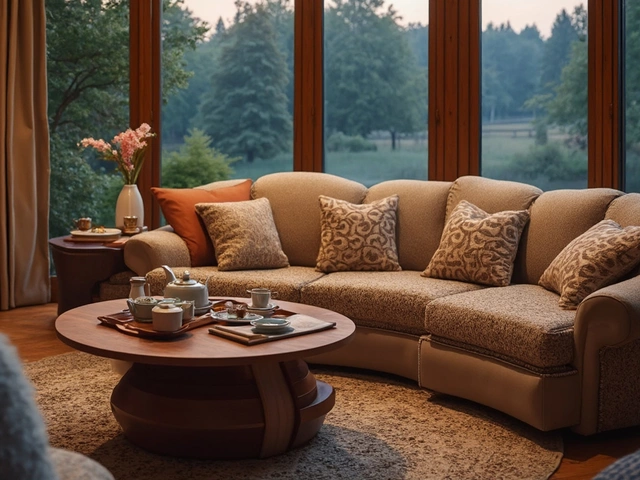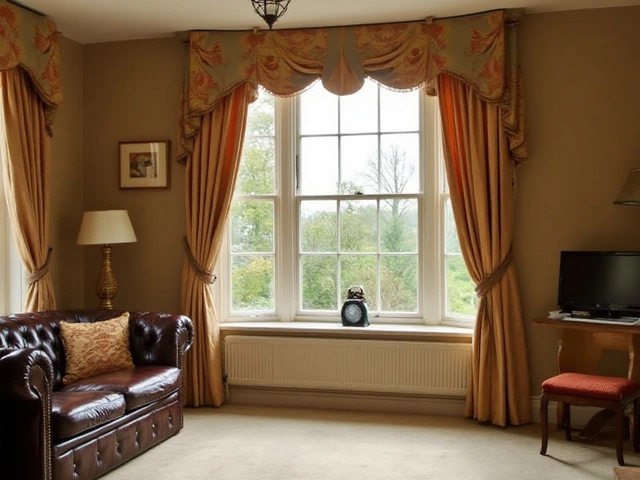Choosing the Most Durable Sofa for Lasting Comfort
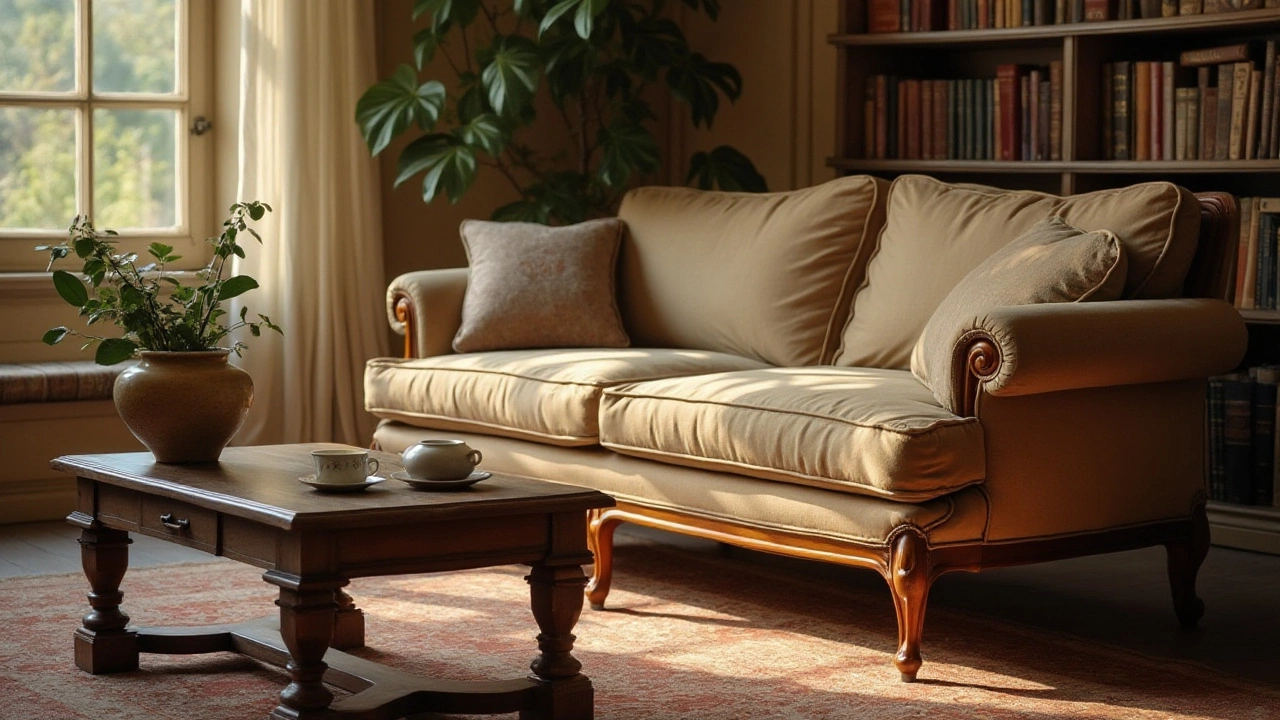
When it comes to sofas, durability might not be the first thing you consider, but it's a factor that pays off in the long run. Whether you have a bustling household with kids and pets or you simply want a piece of furniture that can withstand the test of time, knowing what makes a sofa durable is key.
There are plenty of things to think about, from the type of fabric that won't fray or stain easily to the kind of frame that can support countless cozy movie nights. It's not just about looking good—it's about finding a piece that can handle life's ups and downs. Understanding the different elements that contribute to a sofa's durability can help you make a well-informed choice.
- Understanding Sofa Durability
- Best Materials for Lasting Sofas
- Sturdy Sofa Frame Options
- Cushion and Upholstery Choices
- Tips for Maintaining Sofa Longevity
- Balancing Comfort and Durability
Understanding Sofa Durability
When we talk about sofas, plenty of factors come into play. A durable sofa isn't just about one aspect but rather a combination of high-quality materials, craftsmanship, and usage habits. You might ponder over fabric types, frame materials, and cushion filling because these elements determine how resilient your sofa will be over the years. Knowing how to recognize these characteristics can save you from frequent replacements and help you enjoy long-lasting comfort.
Sofa frames are like the bones of the sofa. A solid, well-constructed frame is essential for any sofa aspiring to longevity. Hardwood, like oak or beech, is often recommended for its strength and stability. Metal frames, though not as common, offer sturdy support and resistance to environmental changes like humidity. In contrast, particleboard or softer woods tend to deteriorate quickly, often resulting in creaking sounds after just a few years of use.
The upholstery plays a massive role in a sofa's durability. Fabrics like leather and tightly woven textiles such as microfiber tend to be more resistant to wear and tear. Microfiber, in particular, resists stains and moisture, making it an excellent choice for families worried about spills. On the other hand, natural fibers like cotton can show wear more quickly but offer a level of comfort that some find unsurpassed. A curious statistic shows that microfiber sofas can often last 10-15 years with proper care, which could lead to significant savings over time.
According to interior designer Kate Watson-Smyth, "A sofa should offer more than just style; it must be able to withstand the daily grind of life. Choosing the right materials pays dividends over years of comfort."
Cushion fillings are another piece of the puzzle. High-density foam offers great support and retains its shape over time, making it a popular choice among manufacturers aiming for durability. Down-filled cushions, while luxurious, tend to flatten quicker and require regular fluffing to maintain their comfort and shape. An alternative middle ground could be the use of memory foam, which has both support and a degree of plushness, maintaining a balance between comfort and endurance.
While durable sofas can initially come with a higher price tag, their cost-effectiveness over time is unmatched. Cheaper, less durable sofas might save a few dollars upfront but can result in frequent repairs or replacements. In essence, understanding the dynamics of sofa durability not only enhances your living space but also promotes a sustainable approach by reducing waste, aligning both your comfort and ethical choices. When choosing a sofa, consider not just today’s needs but how your lifestyle and the sofa’s characteristics can grow together over the years.
Best Materials for Lasting Sofas
When selecting a durable sofa, the choice of materials plays a crucial role in determining its longevity and resilience. Let's delve into what makes certain fabrics more suited for sofas that last. One of the top contenders for durability is leather. Authentic leather not only provides a classic and timeless aesthetic but also delivers exceptional durability. It's a material known for developing a unique patina over time, adding charm and character. Properly maintained leather can withstand the rigors of daily use while being relatively easy to clean. Spills that would ruin other materials often wipe right off a quality leather surface. Of course, genuine leather requires regular conditioning to prevent cracking, but the efforts are well rewarded with years of longevity. For those seeking alternatives, especially if you're more budget-conscious or keen on vegan options, microfiber might be the answer.
Microfiber is another remarkable choice, particularly due to its resistance to stains and wear. This synthetic material mimics the texture of suede and is a favorite in households with pets and children, where spills are frequent. The tightly woven fibers make it hard for dust and allergens to penetrate, and cleaning up is typically a breeze. It's a practical choice that doesn't demand too much in the way of maintenance other than the occasional vacuuming. Now, let's consider another popular fabric—canvas. While it may not have the luxurious appeal of leather or the soft touch of microfiber, canvas is tough, known for its robust nature and durability in high-traffic areas. It's casual and versatile, often appealing for sofas in more relaxed settings. One key attraction of canvas is its breathability, making it a comfortable option in warmer climates.
Beyond fabrics, the structural materials should not be overlooked. A sofa's frame can significantly impact its durability. Hardwood, such as oak, maple, or beech, usually makes the best choice for a sturdy and resilient frame. These woods are dense and less likely to warp over time compared to softer woods. Constructing frames with joints that are glued and dowelled, rather than just stapled, also adds to a sofa's longevity. Sometimes, you might find sofas made with a plywood frame, and while they can offer decent durability, they are typically less robust than their hardwood counterparts. Maintenance and preventative measures, like using slipcovers, can also preserve the life of any material. Just remember that each material has its own specific care requirements to ensure it retains its durability over time. Knowing which material matches your lifestyle needs can make a significant difference in extending the life of your couch. Investing in the right materials ensures that your durable sofas bring you comfort and style for years to come.
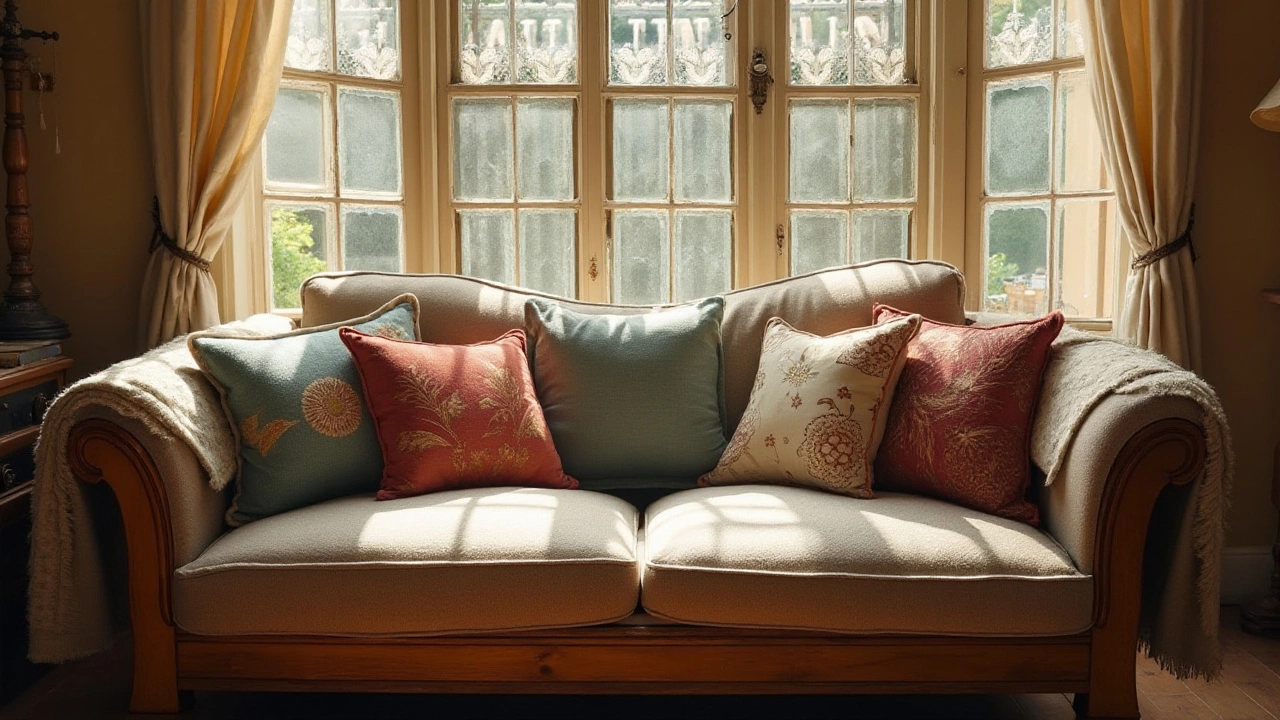
Sturdy Sofa Frame Options
When it comes to ensuring your durable sofas have a strong foundation, much of that strength relies on the frame. Often hidden beneath layers of plush fabric and cushions, the frame does the heavy lifting, literally and figuratively. Wood tends to be one of the best materials for a sofa frame. Not all wood is created equal, though; kiln-dried hardwood, such as oak, ash, or beech, stands out for its durability. These woods are dried in a kiln to remove all moisture, which prevents warping and cracking, especially over time. Contrast this with softer woods or composites, which might be light on the wallet, but can sag or break under pressure much sooner.
Metal frames are another option, particularly those made of steel. They provide an excellent strength-to-weight ratio and can be fashioned into sleek, modern designs that appeal to a contemporary aesthetic. Aluminum, while light, isn’t as robust for daily wear and tear compared to steel. One crucial thing to look for is joint construction. The best frames have reinforced joints. Think tongue-and-groove or double dowel joinery, which enhance longevity compared to mere nails or staples. These techniques, combined with corner blocks, help the sofa handle even the rowdiest movie night. According to a report by the International Interior Design Association, “The frame is the backbone of your sofa—a guarantee of its lifespan and the unwavering support it provides.”
Quality craftsmanship further enhances the frame’s endurance. A frame that isn’t square will not perform well, leading to uneven wear or sagging; therefore, attention to construction details is vital. Upholstered joints and close-fitting mortise-and-tenon joints are standard in the finest upholstered furniture. It’s not just about what's assembling the frame, but rather how it's being put together. To get a good balance of cost and durability, multi-ply engineered woods are often used; they're less expensive than solid hardwood but provide additional strength through layers of wood, pressed together.
Another substantial option comes in the form of reinforced corner blocking, a technique where extra pieces of wood are added in the corners of the frame. This adds stability and guards against racking—when parts shift out of alignment. A sofa also benefits from having legs that are a continuation of the frame itself, not separate pieces screwed into it, as this is inherently stronger. The frame should not creak or wobble when new, and these are indicators that the construction may not endure regular use.
Let’s consider some fun facts through a table comparison that might help in making a decision:
| Material | Strength | Weight | Longevity |
|---|---|---|---|
| Kiln-dried Hardwood | High | Moderate | Excellent |
| Metal (Steel) | Very High | Light | Good |
| Aluminum | Medium | Very Light | Moderate |
In deciding on your next sofa materials, considering these frame options is imperative. Leather might be luxurious, and fabric plush, but without a solid skeleton, a sofa won’t be able to support you through the years. Choosing right now will ensure a cosiness that lasts for years, turning each sit-in into a satisfying experience.
Cushion and Upholstery Choices
When choosing a sofa, one of the aspects you cannot overlook is the cushion and upholstery selection. These elements do more than just contribute to a sofa's aesthetics; they play a crucial role in how durable your sofa will be. The right choices here can mean the difference between a couch that looks tired after a year and one that remains inviting for many years. Cushions filled with high-density foam, which have a reputation for maintaining their shape better, can often withstand regular use. Alternatively, feather-blend cushions provide a luxurious feel but require more maintenance to keep them looking fresh.
The type of upholstery can dramatically influence the lifespan of a sofa. Leather, for instance, is considered one of the most durable materials available. It gets better with age, developing a nice patina, and can handle spills relatively well; this makes it a fantastic choice for those looking for long-lasting couches. For those leaning towards fabric, microfiber stands as a strong contender due to its tight weave that resists spills and tracks less dust, though it may not offer the same breathability as natural fabrics.
For upholstery, consider choosing a material that matches your lifestyle. A heavy-duty synthetic blend can offer both durability and ease of cleaning, especially if you have children or pets. These fabrics are often designed to be stain-resistant and are less prone to fading. In contrast, if you prefer a more natural look and feel, cotton and linen blends are popular. While they may not be as tough as synthetics, they bring a unique charm and are often seen as more environmentally friendly. Investing in good quality slipcovers can also extend the life and look of your sofa's upholstery significantly.
"In the end, the quality of your cushions and upholstery will directly affect the longevity and appearance of your sofa," says Emily Thompson, a renowned furniture designer. "Choosing materials that complement your lifestyle is just as important as aesthetic preferences."
When examining sofa cushions, check for those with reversible designs. This allows the cushions to be flipped regularly, promoting even wear. Reversible cushions are often viewed as a sign of quality construction and can extend the lifespan of your sofa. Similarly, when it comes to upholstery, pay attention to the weave and stitching. Fabrics with tighter weaves typically last longer as they are less likely to snag or fray.
Another critical factor is the color and pattern of the upholstery. Darker colors and patterns tend to hide wear and soiling better than lighter shades. If you're set on a lighter palette, you might want to consider investing in professional fabric protection treatments to help resist stains. Ultimately, the key is balancing durability with comfort and style, ensuring that your sofa remains a cherished centerpiece in your living space.
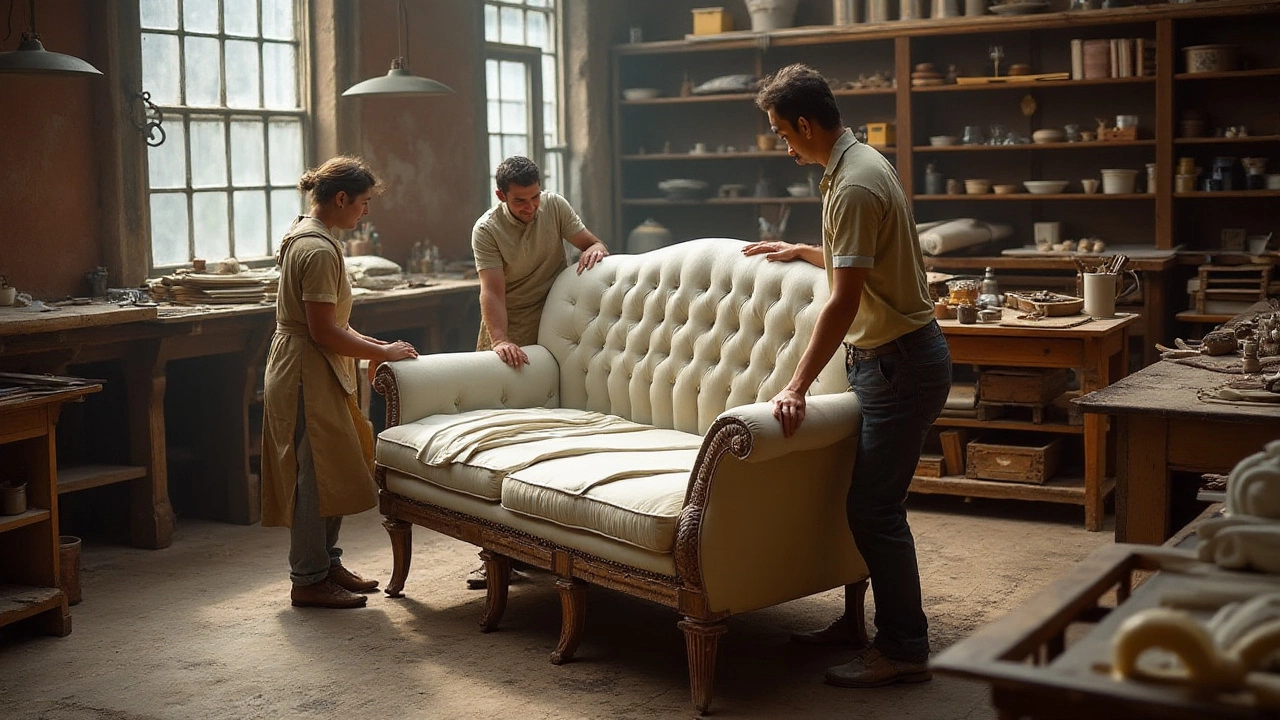
Tips for Maintaining Sofa Longevity
Making sure your sofa stays in great shape for years doesn't have to be complicated. It's about regular care and attention to details that might seem small but make a big difference. Start by placing your durable sofa away from direct sunlight to prevent fading. UV rays can damage fabric colors over time, leaving your once-vibrant sofa looking tired and worn out. If moving the sofa isn't an option, consider using curtains or blinds during the sunniest parts of the day to limit exposure.
Vacuuming the sofa weekly is another simple yet effective way to keep it looking sharp. Dust and dirt can accumulate in the textile fibers, wearing them down over the years. Use an attachment with a soft brush for best results. For cushions, regularly re-fluff and flip them. This not only maintains their shape, but it also evenly distributes the wear and tear. Some experts suggest, "A little maintenance each week can extend the life of your sofa by years," a guiding principle worth adopting.
Spills happen; responding quickly can prevent lasting damage. Always blot stains gently with a clean, dry cloth rather than rubbing them, as this can spread the stain further into the fibers. For specific cleaning products, check the manufacturer's label on your sofa. Using the wrong cleaner could inadvertently damage your sofa materials. For leather sofas, a regular application of a conditioner can prevent cracks and keep them looking supple and new.
Consider the environment in which your sofa resides. If pets are part of the family, keep an eye on the scratching and consider protective covers in high-use scenarios. Training pets or providing alternative scratching options can also mitigate the risk of damage. For homes with a lot of foot traffic, established 'no-shoes' rules can help keep dirt and oils from rubbing off onto the furniture.
For those who enjoy rearranging their space, move your sturdy sofa with care. Dragging it across the floor can eventually lead to frame issues. It's always safer to lift and carry if possible, keeping an eye on the pathways for any obstacles. And every few months, take a moment to check the screws and brackets; tightening these can reinforce the sofa’s structure, ensuring it remains comfortable and structurally sound for as long as possible.
Balancing Comfort and Durability
Finding the right balance between comfort and durability in a sofa can feel like a bit of a tightrope walk. You don't just want a couch that looks good; you want one that feels good and will keep feeling good for a long time. This process begins by taking a hard look at the materials. Typically, the most durable sofas use a combination of hardwood frames and high-density foam cushions. Hardwood, such as oak or ash, provides a sturdy foundation, while high-density foam retains its shape much longer compared to soft, airy alternatives. These materials are not only tough but are also crafted to maintain their integrity, even as you spend countless hours binge-watching your favorite shows.
It’s crucial to consider fabric as well, as it has a big impact on both the comfort and longevity of your sofa. Many swear by microfiber or leather due to their strong resistance to wear and ease of cleaning. Microfiber, with its tightly woven fibers, stands up to spills and stains remarkably well, making it a favorite in households with kids or pets. Meanwhile, leather, while initially a bit stiffer, breaks in beautifully over time, softening with age yet continuing to resist tearing. Investing in such materials usually means you’re in it for the long haul. You want fabrics that will look and feel just as good five years down the road as they do the day you bring your sofa home.
Remember, the balance doesn’t just lie in the materials alone. A sofa’s design plays a critical role in how it feels. Sofas with deeper seats offer a luxurious lounging experience, which is perfect if you love curling up. Meanwhile, those with firmer support might be better suited for maintaining good posture, helping your back in the long run. When test-driving sofas, pay attention to the configuration and padding. A well-padded armrest, for instance, can enhance comfort, especially if you frequently lean or nap on your couch. It's these small details that come together to determine how well your sofa performs over time.
As noted furniture designer Charles Eames once said, "The details are not the details. They make the design."
Another vital consideration is the usage context. Think about how many hours a day your sofa will be used. In a living room that doubles as a family hub, sturdiness might take precedence over ultra-soft comfort. Meanwhile, a sofa in a rarely-used study can afford to sacrifice some durability for plushness. This doesn't mean compromising on quality but tailoring your choice to fit your specific needs. Consider long-term use and who will primarily use it; these factors help steer your decision process toward a perfect balance. Reflecting on these points together gives you a comprehensive view to make a choice that satisfies both comfort and durability, so you can sit back and relax, knowing your sofa can handle the future ahead.
It's not a one-size-fits-all situation, and the ideal solution often resides in thoughtful experimentation. Visiting showrooms and sitting on different models helps give a real-world sense of how each choice feels against your back and underneath you. Ask lots of questions, dig into the nitty-gritty of each product's specifications, and weigh those against your daily habits. Your ideal sofa awaits, promising countless afternoons of comfort and many years of lasting presence.

